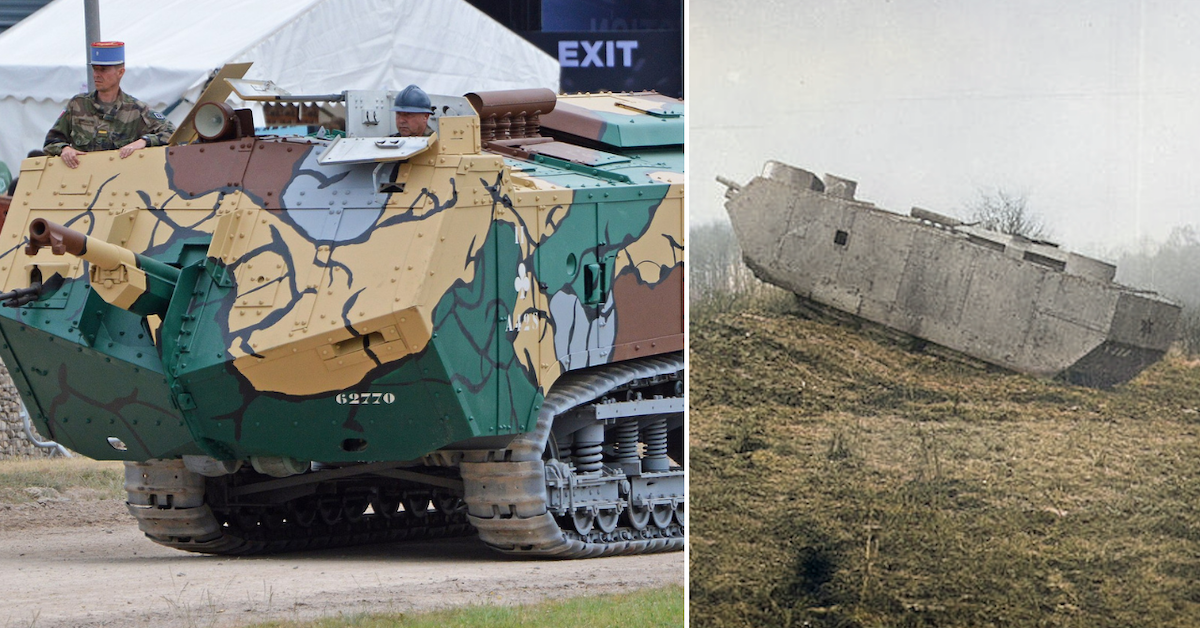Tank warfare was introduced during the First World War. The British began development in 1915, and when the war broke out, more countries began to build their own. France was included in this, producing two tanks in the early years of the conflict. The first was the Schneider CA1, which saw widespread use on the front. It was followed by the Saint-Chamond, which by today’s standards would no longer be considered a tank.
France develops its own tanks
The CA1 was in development when the French government approached the Compagnie des forges et aciéries de la marine et d’Homécourt (FMAH) in Saint-Chamond about building a fleet of 400 tanks. They intended to build one similar to the CA1, but when Schneider refused to share its patents, the decision was made to try to one-up the design.
Production of the tank was led by Colonel Émile Rimailho, an artillery officer formerly with the French State arsenal system. He is credited with helping to design the French 75 mm field gun and the 155 mm Rimailho Howitzer Model 1904TR. He would push forward with a new field gun as its primary weapon, the Saint-Chamond 75 mm.
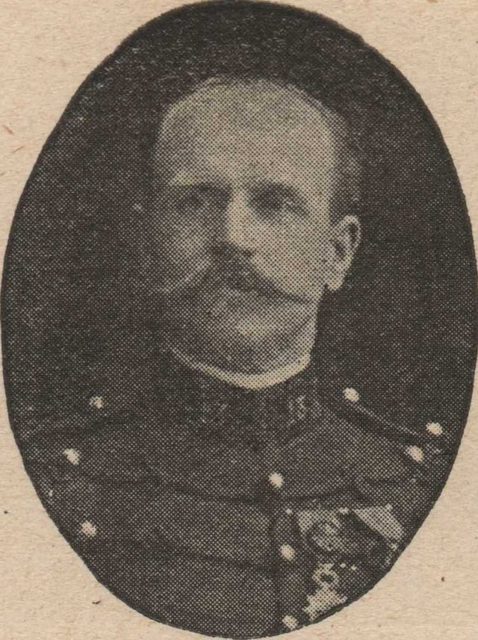
Rimailho used the American Holt tractor’s running gear and the 75 mm field gun as his starting points. The earliest prototype, both longer and heavier than the Schneider CA1, was demonstrated for the French military in April 1916.
A rather unique design
The height and weight of the Saint-Chamond were the result of having to accommodate the 75mm field gun. It was placed entirely within the fighting compartment at the front, not only shifting the tank’s center of gravity, but also making the driver traverse the entire vehicle if they needed to move the gun. The 75 mm was accompanied by four Hotchkiss Mle 1914 machine guns on all four sides, surpassing the CA1’s two.
The first compartment was cramped. To the left was the driver, while the machine gunner tasked with operating the front Hotchkiss and breeching the 75 mm sat on the right. A loader was present to adjust the gun’s elevation, but was vulnerable to enemy fire, given the observation hatch’s frontal location.
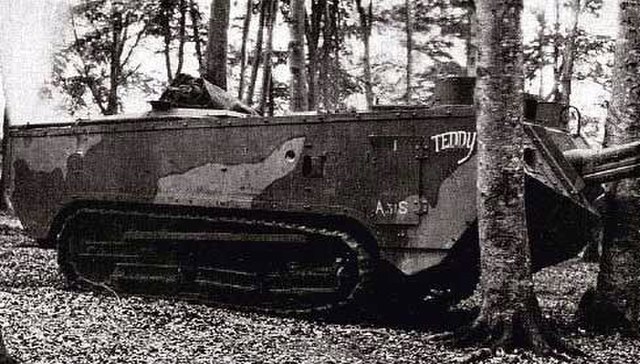
A second compartment toward the back held another machine gunner and a secondary driver’s position, allowing the Saint-Chamond to be driven backwards in an emergency. Between the two compartments sat the “Crochat-Colardeau” gasoline-electric transmission already in use by French railcars. It was capable of providing an output of 260 amperes under 200 volts, and allowed for a top speed of 12 kilometers per hour. However, the Saint-Chamond seldom reached such speeds.
The tank was relatively light when it came to its protective armor. Its sloping front was made from 11 millimeters of steel, while its sides were 17 millimeters thick. This, along with its Holt caterpillar tracks powered by separate electric motors, proved to be the Saint-Chamond’s biggest shortcomings.
Entry into combat
The Saint-Chamond became the second French tank to enter service during the war. This included a fleet of 48 unarmed caisson tanks, tasked with towing the much-lighter CA1 and providing supply and recovery. Twelve military groups were formed with the tanks: the Artillerie Spéciale Nos. 31–42.
The Saint-Chamond first saw action at Laffaux Mill on May 5, 1917. The majority ended up stuck in the trenches, as their small tracks were unable to sustain their weight. This turned into a common complaint from those manning the tanks, along with issues regarding bullets being able to penetrate its armor.
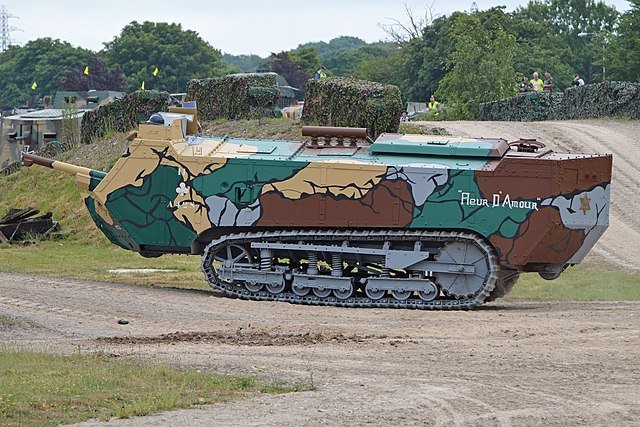
Another complaint from troops revolved around the center of the tank, where the engine was held. It was often noisy and spewed gasoline and oil fumes, making it a terrible work environment. It reached a point where the issues were brought to the attention of General Headquarters, in a memo that read:
“Nobody wants to serve on the Saint-Chamond. Second Lieutenant de Gouyon, principal Saint-Chamond driving instructor at Marly, has publicly declared that it has become virtually impossible for him to continue to carry on, and since he is a Member of Parliament, that he will request to have the whole matter placed on the next parliamentary agenda.”
Improvements and continued use in the war
Later models of the Saint-Chamond attempted to rectify these flaws. The roof was redesigned to feature a double slope, allowing satchel charges and grenades to roll off, and the 75 mm was replaced with the more effective Model 1897 field gun.
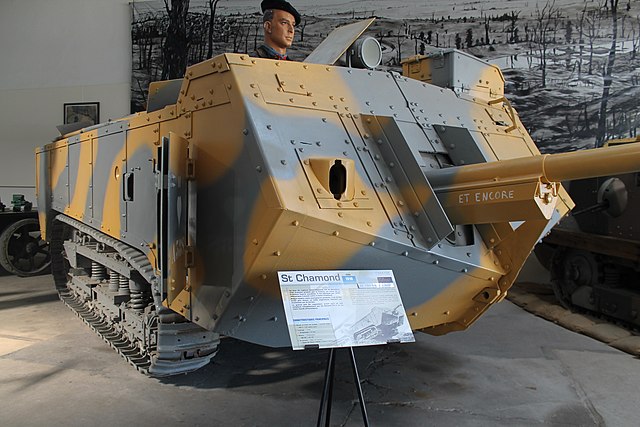
Additional improvements included adding a layer of spaced 8.5 mm armor to the front and removing the two observational turrets. In their place was added a single, low-profile square turret that gave drivers a view of the front and sides of the tank. The biggest change came with the widening of the tank’s tracks, from 324 mm to 412 mm.
Production slowed in March 1918 when the French government began looking into British heavy tanks. They also began producing the Renault FT, which was not only faster, but could also be produced in larger numbers. Overall production of the Saint-Chamond ceased that July, but the tanks remained on the front until October, as combat had moved out of the trenches and onto open soil.
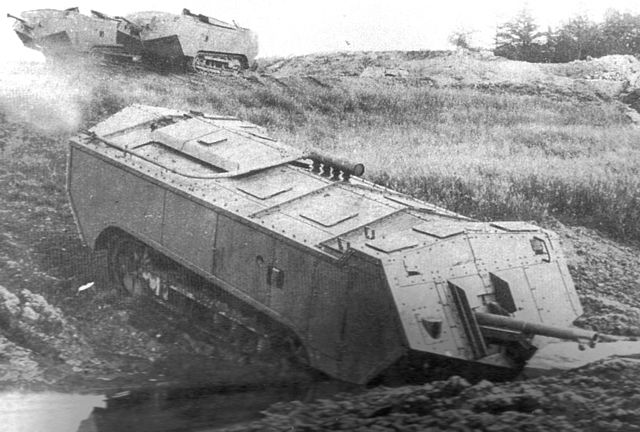
More from us: Michelin Reinvented The Wheel, And The Army Is Testing The Results
When the war came to its conclusion, the French decided to retire the Saint-Chamond from combat. The majority were scrapped, with just 54 renovated for use as ammunition carriers.
